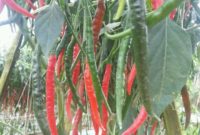Thinning
Removal of excess plants after germination from the crop field or seed bed is called thinning. Excess plants in a crop field reduce crop yield due to intra crop competition. As a result there occurs shortage of space, nutrients, light, air and moisture for individual crop plant which ultimately reduce yield. So, if required, excess seedlings are removed leaving the strongest ones.
Gap filling
Several frugivorous and granivorous animals and birds feed on many seeds after they are sown in the field. Moreover, after transplanting many seedlings fail to establish them in the new environment and dies. Then. Gap filling with seeds staggers the period of germination and emergence. As a result, ripening periods extend over time and affect the harvesting which is scheduled once for most crops; and this seriously impairs the quality of produce.

Objectives of thinning and gap filling
The ultimate goal is to ensure the optimum plant population in the crop field. Plant population more than optimum creates competitive condition whereas that less than optimum results in misuse of space, irrigation water and other inputs.
Advantages
Both thinning and gap filling ensures ideal plant population and optimum utilization of sunlight, space, nutrients, moisture and other inputs which ultimately increases yield.
